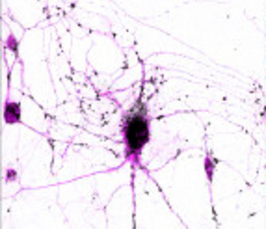Overcoming barriers in Direct Neuronal Reprogramming for disease modeling and brain repair
Seminar
- Date: Jan 25, 2017
- Time: 03:00 PM - 04:00 PM (Local Time Germany)
- Speaker: Sergio Gascón
- Department of Physiological Genomics, Ludwig-Maximilians-University, Planegg-Martinsried, Germany
- Location: Max Planck Institute of Psychiatry
- Room: Kraepelin Seminarroom
- Host: Silvia Cappello
- Contact: silvia_cappello@psych.mpg.de

Therefore we investigated the molecular processes underpinning cell fate re-specification. We have demonstrated that during reprogramming, the conversion of metabolic pathways from a glycolytic-metabotype typical of proliferative cells to a mitochondrial-dependent oxidative metabolism characteristic of postmitotic neurons is linked to an oxidative overshoot that induces cell death by ferroptosis. However, cells forced to remain in anaerobic glycolysis do not die but also do not convert, indicating that the metabolic conversion is up-stream of cell fate changes. Thus, expression of anti-oxidative proteins, such as Bcl-2 or its upstream regulator P-CREB, and/or treatments with anti-oxidant molecules lead to an unprecedented improvement in neuronal conversion of glial cells in vivo, reaching 90% transduced cells turning into neurons in the adult mouse cerebral cortex after stab wound injury, and also many cell types in vitro irrespectively of the transcription factor used for the conversion.